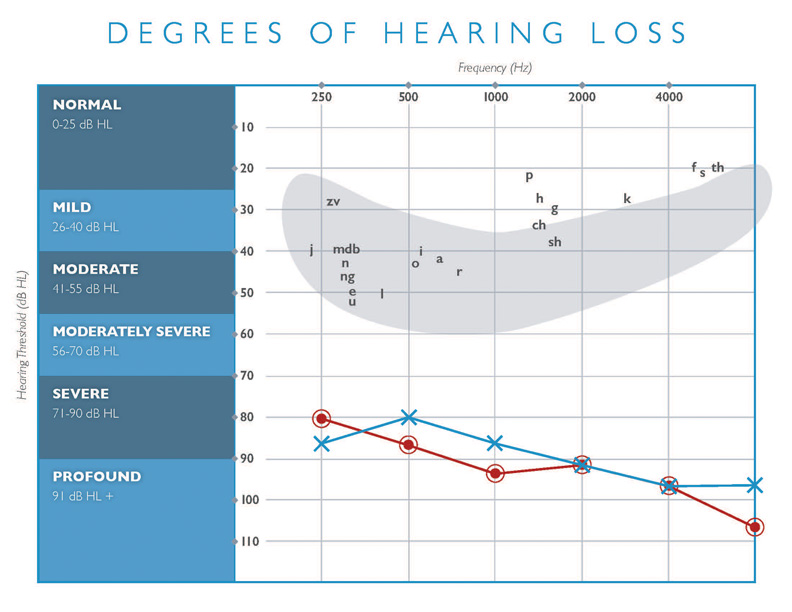It is estimated that between 38-48 million Americans have some type of hearing loss.1,2 If you find yourself frustrated with your ability to hear, you are certainly not alone.
As an individual loses the ability to hear, less sounds will be picked up by the ear and understood by the brain. The degrees of hearing loss ranges between slight, mild, moderate, moderately severe, severe, and profound.3 Normal hearing ranges between -10 – 15 decibels (dB). The following graph displays the degrees of hearing loss by decibels of hearing lost (dB HL).
| Degree | Hearing loss range (dB HL) |
| Slight | 16 – 25 |
| Mild | 26 – 40 |
| Moderate | 41 – 55 |
| Moderately Severe | 56 – 70 |
| Severe | 71 – 90 |
| Profound | 91+ |
Source: American Speech-Language-Hearing Association, asha.org

A hearing test by a hearing care professional is recommended to fully understand your ability to hear. Checking for hearing loss can also be done online or with the apps listed here.
The below graphic displays what types of sounds are lost at each level of hearing loss. For example, an individual with a hearing loss at 30 dB will find difficulty understanding whispering, some words involving “p”, “h”, and “g”, and birds chirping. Someone with a 80 dB hearing loss will find it difficult to hear a dog barking and a baby crying while normal conversation will be very challenging without hearing assistance.

1One in Five Americans Has Hearing Loss - 11/14/2011. (2011, November 14). Johns Hopkins Medicine. https://www.hopkinsmedicine.org/news/media/releases/one_in_five_americans_has_hearing_loss
2 Blackwell DL, Lucas JW, Clarke TC. Summary health statistics for U.S. adults: National Health Interview Survey, 2012 (PDF). National Center for Health Statistics. Vital Health Stat 10(260). 2014.
3 American Speech-Language-Hearing Association, Degree of Hearing Loss